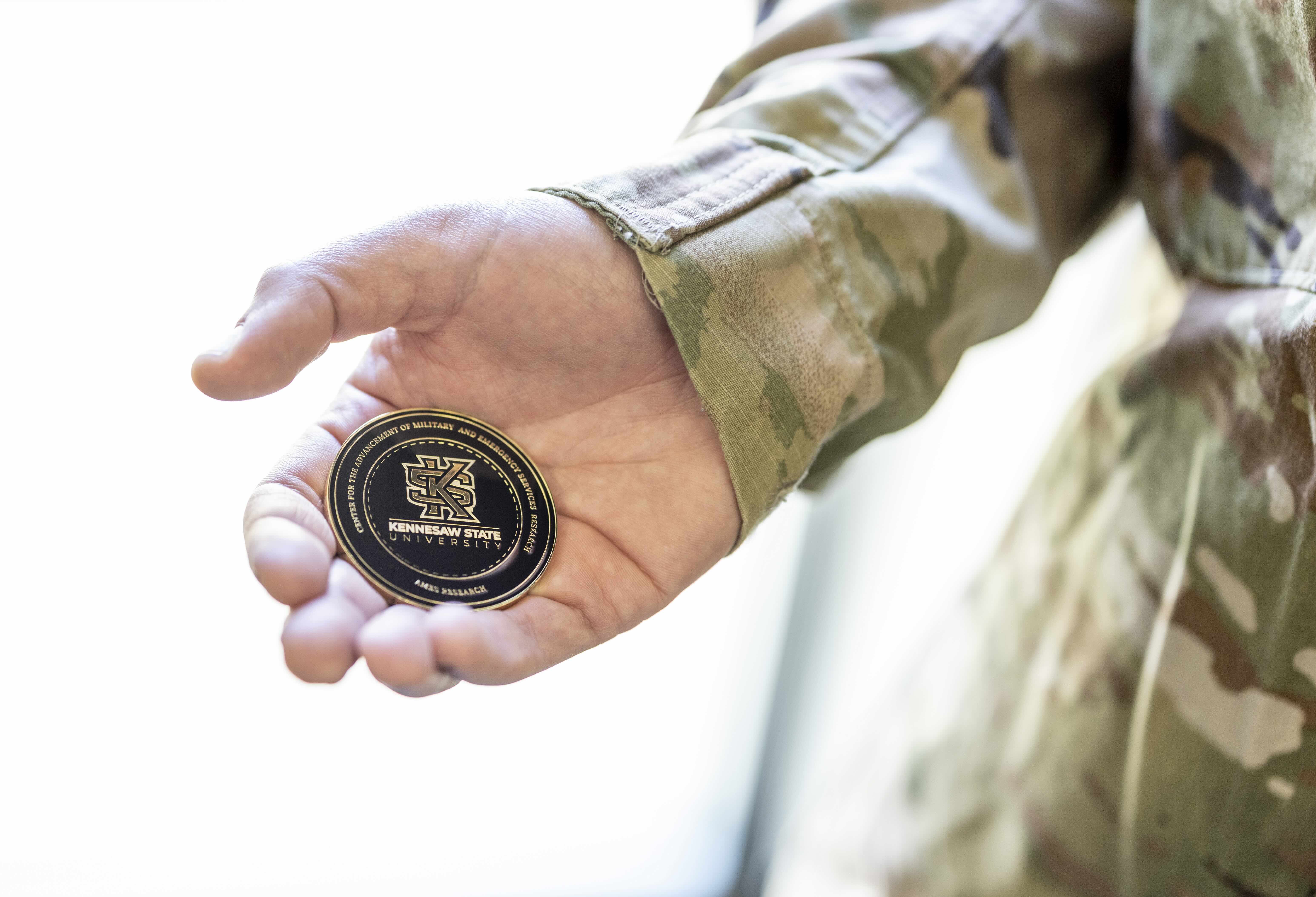[This article by Alyssa Ozment first appeared on the Kennesaw State University website, republished with permission]
The Center for the Advancement of Military and Emergency Services (AMES) Research is working to preserve the legacies of United States veterans who fought oppression both abroad and at home.
Through funding from the U.S. Department of Veterans Affairs’ Veterans Legacy Grants Program (VLGP), Kristin Horan and Chris Hess are collecting the life histories of Georgia’s World War II veterans who returned to the U.S. and participated in the civil rights movement.

“I think that it’s unquestionable that these are folks who’ve had distinguished contributions to what it means to be an American by participating in World War II, but they went beyond that,” said Hess, an assistant professor of sociology and social demographer with AMES. “They saw that the work didn’t stop there, and they were trying to make the United States a more just and equal society upon returning home.”
Currently, the team is working on identifying individuals for their study. They have gathered approximately 10,000 records from across four major cemeteries: the Georgia National Cemetery in Canton, the Georgia Veterans Memorial Cemetery in Milledgeville, the Andersonville National Cemetery, and the Marietta National Cemetery.
“Following their military service, these World War II veterans would have been coming home to an environment that was facing segregation and discrimination,” said Horan, assistant professor of psychology and director of AMES’s outreach core. “I look at the different occupational trends while Chris looks at the housing in neighborhoods trends. We thought that this might be a cool way to look at what was going on in that moment in history and see the people who played an important role.”
This project relies on six undergraduate research assistants comprised of students from various disciplines with what Horan described as “cultural competency,” or the experience of having served in the military or being a family member of someone who has served.
These students will sift through the background information they find using resources such as Ancestry.com and newspaper archives. Once the students have identified the individuals, they will begin compiling a candidate pool to identify next of kin. Then, they will reach out to the families for information on their kin, and the information will be synthesized into a museum exhibition.
Victoria Tucker, a fourth-year journalism and emerging media major, is one student working on the project.
“I’m currently working on CITI training and preparation for conducting interviews with family members of World War II veterans,” Tucker said. “I’m very excited to get started on this. I have family members who fought in World War II and family members currently serving in the military. It’s an honor to be a part of a project honoring veteran stories.”
CITI is the Collaborative Institutional Training Initiative, which is a nonprofit organization responsible for offering courses on research ethics, compliance, and professional development.
The development of a museum exhibition is a major goal of this project, and while Hess and Horan’s team is digging for information, KSU’s Department of Museums, Archives, and Rare Books (MARB) will work to curate the exhibit.
“We want to make sure that the stories are done justice, and I think working with MARB is a great way to ensure that happens,” Horan said.
This project also has the potential to facilitate K-12 learning because the traveling exhibit can allow younger learners to engage with the historical context, such as organizing a field trip or a summer camp lesson plan.
